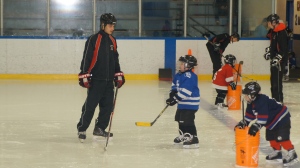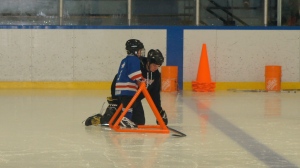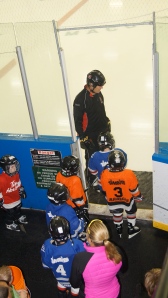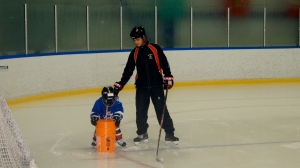Each team in IP2 will be assigned a full set of goalie gear (leg pads, right handed blocker and trapper and a dangler neck protector) in a bag. I look after the goalie sticks and have one set of left handed blocker and trapper. I will get more of these (hopefully). Each team (parent rep or designate) is responsible for bringing the gear to every practice and game. DO NOT GIVE IT TO THE GOALIE TO BRING TO AND FROM THE RINK. If that player is absent then the equipment will not be available of the team. Goalie gear can not be borrowed at the end of the season. This decision was arrived at largely because one team has yet to return it from last year’s IP2. The practice of loaning gear over the summer for summer hockey is suspended. The plan in IP2 is to begin to train goalies starting the first practice in November. I hope that any player who wants to try being a goalie has the chance. Historically as the season goes on usually one or two players on the team show extra interest. It is not the intention of the Initiation program that teams always dress the same player as the goalie. Players dressing as a goalie will need some extra time to get dressed.
There is no goalie training in IP1. The emphasis will be on skating and other hockey skills.



